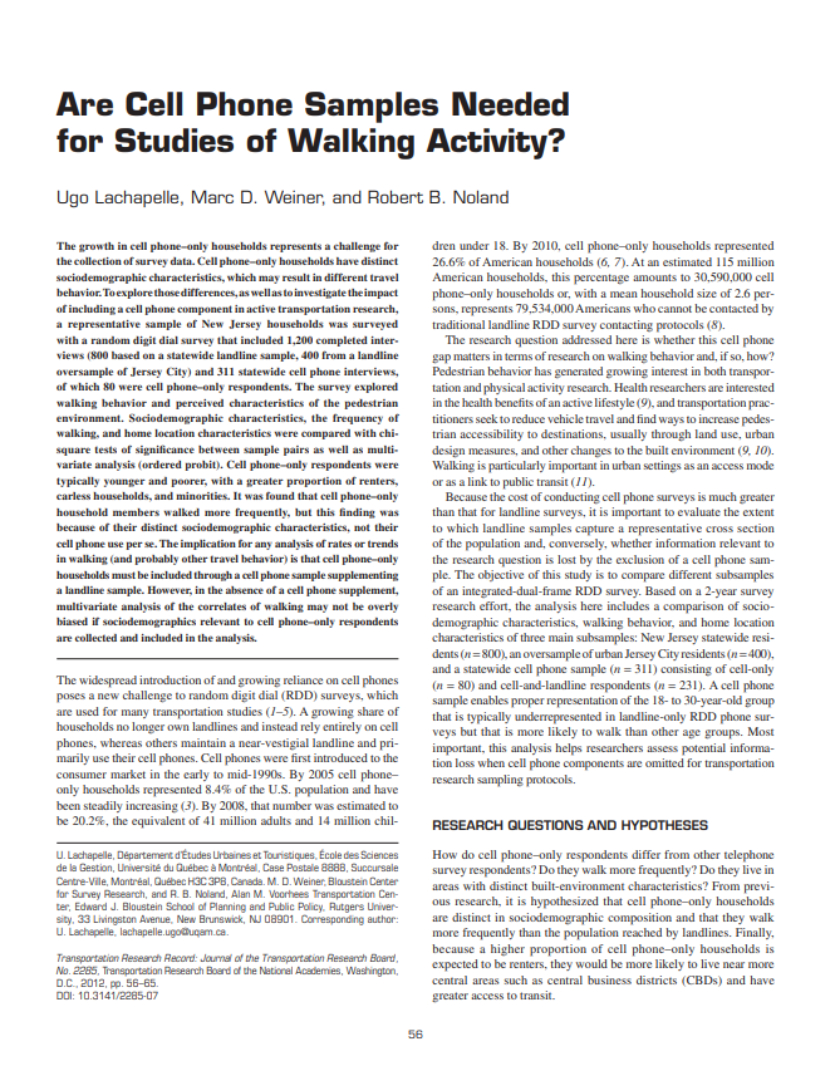The growth in cell phone–only households represents a challenge for the collection of survey data. Cell phone–only households have distinct sociodemographic characteristics, which may result in different travel behavior. To explore those differences, as well as to investigate the impact of including a cell phone component in active transportation research, a representative sample of New Jersey households was surveyed with a random digit dial survey that included 1,200 completed interviews (800 based on a statewide landline sample, 400 from a landline oversample of Jersey City) and 311 statewide cell phone interviews, of which 80 were cell phone–only respondents. The survey explored walking behavior and perceived characteristics of the pedestrian environment. Sociodemographic characteristics, the frequency of walking, and home location characteristics were compared with chisquare tests of significance between sample pairs as well as multivariate analysis (ordered probit). Cell phone–only respondents were typically younger and poorer, with a greater proportion of renters, carless households, and minorities. It was found that cell phone–only household members walked more frequently, but this finding was because of their distinct sociodemographic characteristics, not their cell phone use per se. The implication for any analysis of rates or trends in walking (and probably other travel behavior) is that cell phone–only households must be included through a cell phone sample supplementing a landline sample. However, in the absence of a cell phone supplement, multivariate analysis of the correlates of walking may not be overly biased if sociodemographics relevant to cell phone–only respondents are collected and included in the analysis.
